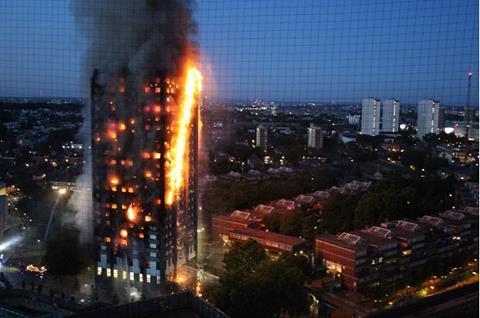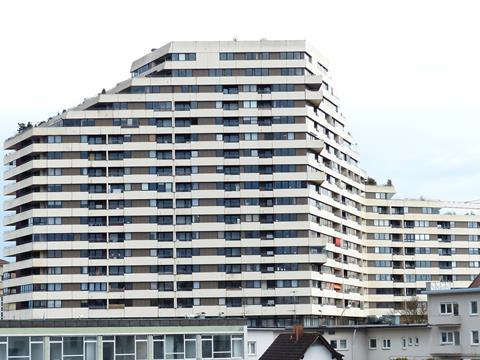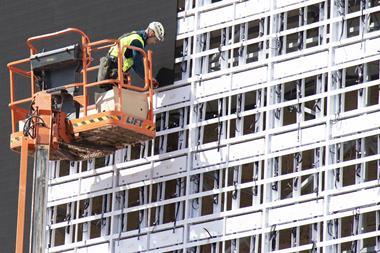Building owners will be named if remediation to remove unsafe cladding has not begun warned the housing secretary
The Association of British Insurers’ (ABI) has welcomed new measures to improve building standards from the Ministry of Housing, Communities and Local Government (MHCLG).
The new measures extend the cladding ban as well as giving an update of fire sprinklers. This is because building owners are responsible for ensuring their buildings are safe.
Therefore where there is no clear plan for remediation, the government will work with local authorities to support them in their enforcement options.
Meanwhile a new building regulator will be established.
The housing secretary Robert Jenrick MP announced these as he warned that the slow pace of improving building standards with these adjustments will not be tolerated. These measures go both faster and further into ensuring that residents are safe in their homes.

The ABI’s director in general insurance, James Dalton said: “This is a welcome step forward in ensuring safer buildings following the tragedy at Grenfell Tower over two years ago.
“The ABI has long called for building safety reforms and the government should move to extend the ban on the use of combustible materials and lower the height threshold for sprinkler installation with urgency. The next step will be to ensure that new regulation will improve the wider building control system to make buildings safer places for residents and businesses alike.”
The announcement follows the prime minister writing to the chairman of the Grenfell Tower Public Inquiry, Sir Martin Moore-Bick, to update him on the government’s response to Phase 1.
Name and shame
Speaking in the House of Commons, Jenrick made clear as of next month he will begin to name building owners where remediation has not started to remove unsafe Aluminium Composite Material (ACM) cladding from their buildings.
He confirmed that the government will consult on extending the ban on combustible materials to buildings below 18 metres and seek views on how risks are assessed within existing buildings to inform future policy.
Remediating unsafe cladding
Jenrick, added: “The government is committed to bringing about the biggest change in building safety for a generation.Progress on improving building safety needs to move significantly faster to ensure people are safe in their homes and building owners are held to account.
“That’s why today I’m announcing a major package of reforms, including establishing the Building Safety Regulator within the HSE to oversee the new regime and publishing consolidated guidance for building owners.”
The new building measures
Combustible cladding ban: The government has also launched a consultation into the current combustible cladding ban, including proposals to lower the 18-metre height threshold to at least 11 metres.
Sprinklers: The government’s consultation on sprinklers and other measures for new build flats concluded on 28 November 2019. We have proposed lowering the height threshold for sprinkler requirements in new buildings and will set out detailed proposals on how the government will deliver the technical review of fire guidance in February.
Remediation of buildings with ACM cladding: To speed up remediation, we will be appointing a construction expert to review remediation timescales and identify what can be done to improve pace in the private sector.
To ensure cost is not a barrier to remediation, the government is considering different options to support the remediation of buildings. We are examining options to mitigate costs for individuals or provide alternative financing routes.
Fire Safety Bill: The government has also set out further details of the upcoming Fire Safety Bill being introduced to Parliament, which we set out in more detail in our response to the Public Inquiry Phase 1 recommendations.This will clarify the Regulatory Reform (Fire Safety) Order 2005 – ‘the Fire Safety Order’ - requiring residential building owners to fully consider and mitigate the risks of any external wall systems and front doors to individual flats.The changes will make it easier to enforce where building owners have not remediated unsafe ACM by complementing the powers under the Housing Act.
Building Safety Regulator: The Health and Safety Executive (HSE) will establish a new regulator in shadow form immediately, ahead of it being fully established following legislation. It will raise building safety and performance standards, including overseeing a new more stringent regime for higher-risk buildings. Drawing on the experience and the capabilities of other regulators to implement the new regime with Dame Judith Hackitt will chair Board to overseeing the transition.
Chair of the health and safety executive, Martin Temple said: “We are proud the government has asked HSE to establish the new Building Safety Regulator. HSE’s vast experience of working in partnership with industry and others to improve lives will ensure people are confident the creation of the new regulator is in good hands.”
Advice on building safety for multi-storey, multi-occupied buildings: Recent high-rise fires, including that in a block of student flats in Bolton during November 2019, highlighted that many building owners still do not take sufficient measures to ensure the safety of residents in buildings at all heights
Therefore, the government who appointed independent expert advisory panel (IEAP) has clarified and updated advice to building owners on actions they should take to ensure their buildings are safe, with a focus on their external wall systems also known as cladding.
This consolidated advice simplifies the language and previous advice into one place, making clear that building owners need to do more to address safety issues on residential buildings under 18 metres.
It reflects the independent panel view that cladding material comprised of ACM (and other metal composites) with an unmodified polyethylene core should not be on residential buildings of any height and should be removed.
A call for evidence will also be published, seeking views on the assessment of risks within existing buildings. This important step will help to gather ideas and lead to research which will provide a firm evidence base to guide decisions for both existing buildings and future regulatory regimes.
Fire doors: The consolidated advice also makes clear the actions building owners should take in relation to fire doors. The government welcomes the commitment by the Association of Composite Door Manufacturers to work with building owners to remediate their doors which failed tests. We will continue to monitor the situation closely to ensure that this commitment is followed through.
“Unless swift progress is seen in the coming weeks, I will publicly name building owners where action to remediate unsafe ACM cladding has not started. There can be no more excuses for delay, I’m demanding immediate action,” Jenrick said.
The new regulator will be at the heart of the new regime and established as part of the Health and Safety Executive (HSE) to give effective oversight of the design, construction and occupation of high-risk buildings .













































No comments yet